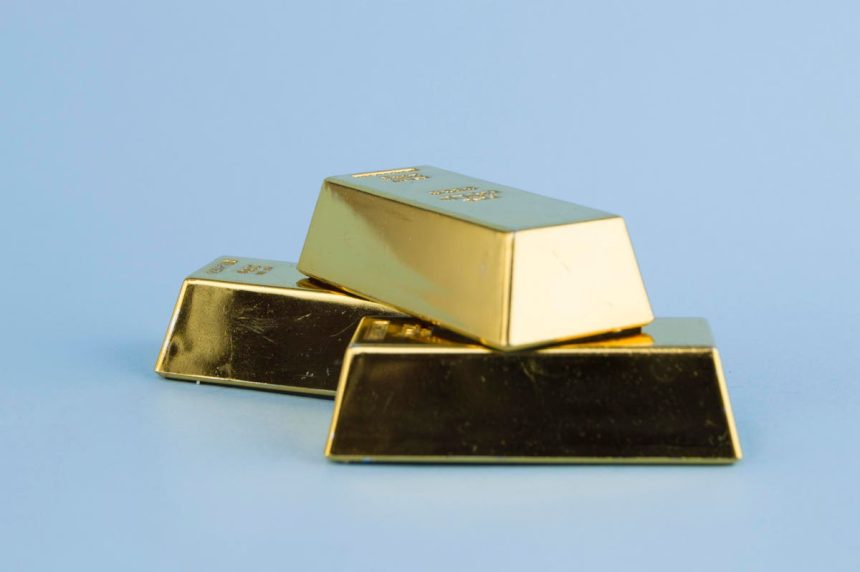Bas Kooijman, CEO of DHF Capital S.A., Asset Manager, and Author.
In a world where inflation is rising, overseas turmoil is seemingly constant, and most of the world is excluded from old-age pension schemes, strategically diversifying portfolios is not only an essential strategy for investors to set themselves up for a comfortable retirement but also to provide a security net for everyday life in the lead-up to it.
Recently, several analysts and agencies have forecasted that gold could rise above 10% to 15% or even more in 2023, and this projection could see prices rising by nearly $200 per ounce. Furthermore, some are predicting a moderate gold price increase in 2024, and the global gold jewelry market is expected to reach a value of over $300 billion by 2030.
With nearly a decade of both trading and teaching experience, and with an increased focus on gold markets over the past four years, I strive to create wealth opportunities that are more accessible and affordable for all. In line with this goal, I have helped investors across Europe and the Middle East, among other markets. Here are some of my top considerations for investing in gold.
The Advantages
1. A Safe-Haven Asset With Proven Stability
Gold remains stable rather than declining over time. Even though inflation pushes down the value of currencies, gold isn’t subject to this downward pressure, and therefore, it is a useful commodity for hedging against inflation and maintaining its purchasing power in times of economic uncertainty.
Gold tends to perform well during periods of crisis, providing a level of protection for portfolios. The Covid-19 pandemic was a prime example of this, as gold prices were driven to new records.
2. A Tool To Diversify
With diversification being a crucial aspect of any investment strategy, including gold in your investment portfolio can help reduce overall risk because its performance doesn’t necessarily correlate with that of other asset classes like stocks and bonds.
3. A Tangible Asset With Limited Supply
Gold is a physical asset that investors can hold in their hands. This aspect can provide a sense of security and peace of mind for some investors. It also means that the ability to easily access it, if needed, enables investors to trade it for instant cash. If you live in the UAE, this is something you can benefit from first-hand at the Gold Souk.
Additionally, with gold being a finite resource, and its supply being relatively limited, its value may increase over time due to its scarcity.
4. Geography Is Irrelevant
Gold is recognized and accepted worldwide, making it easy to buy and sell across various countries and cultures. For this reason, and several others, investing in gold has been a popular strategy for centuries—regardless of whether you’re based in the UAE or anywhere else in the world.
The Risks
While it’s important to conduct your research and consider your financial goals before making any investment decisions, it’s also essential to remember that, like any investment, gold comes with its own set of risks and potential drawbacks.
The price of gold can be influenced by various factors, including changes in interest rates, currency fluctuations and market sentiment. Moreover, gold does not generate any income or dividends, and its value can be subject to market speculation.
With that said, investing in gold might not be advisable when economic conditions are stable and positive, as gold’s value often thrives in uncertain or tumultuous markets, often acting as a hedge against the traditional stock market. During periods of strong economic growth and low inflation, other investment options tend to offer better returns.
It’s, therefore, crucial to consider the broader economic context and diversify your investment portfolio appropriately before deciding to invest in gold. Similarly, it’s important to view gold as a single element of your broader portfolio.
Preparing To Invest
Before making any investment decisions, ask yourself questions such as: What is the purpose of this investment? What are my short-term and long-term financial objectives? How comfortable am I with potential fluctuations in the value of my investment? What is my preferred level of involvement in managing the investment?
Assessing your risk management is essential, as higher potential returns often come with increased risk. Short-term goals might require more conservative and liquid investments, while long-term goals could allow for greater exposure to potentially higher-yielding but riskier assets. Evaluating the historical performance of different investment options, understanding fees and costs, and staying informed about economic trends can contribute to informed decision making.
Ultimately, the decision to invest in gold should align with your overall financial objectives, risk tolerance and the overall composition of your investment portfolio. At the end of the day, when it comes to choosing what to invest in, I think the expression “old is gold” speaks for itself.
The information provided here is not investment, tax or financial advice. You should consult with a licensed professional for advice concerning your specific situation.
Forbes Business Council is the foremost growth and networking organization for business owners and leaders. Do I qualify?
Read the full article here









